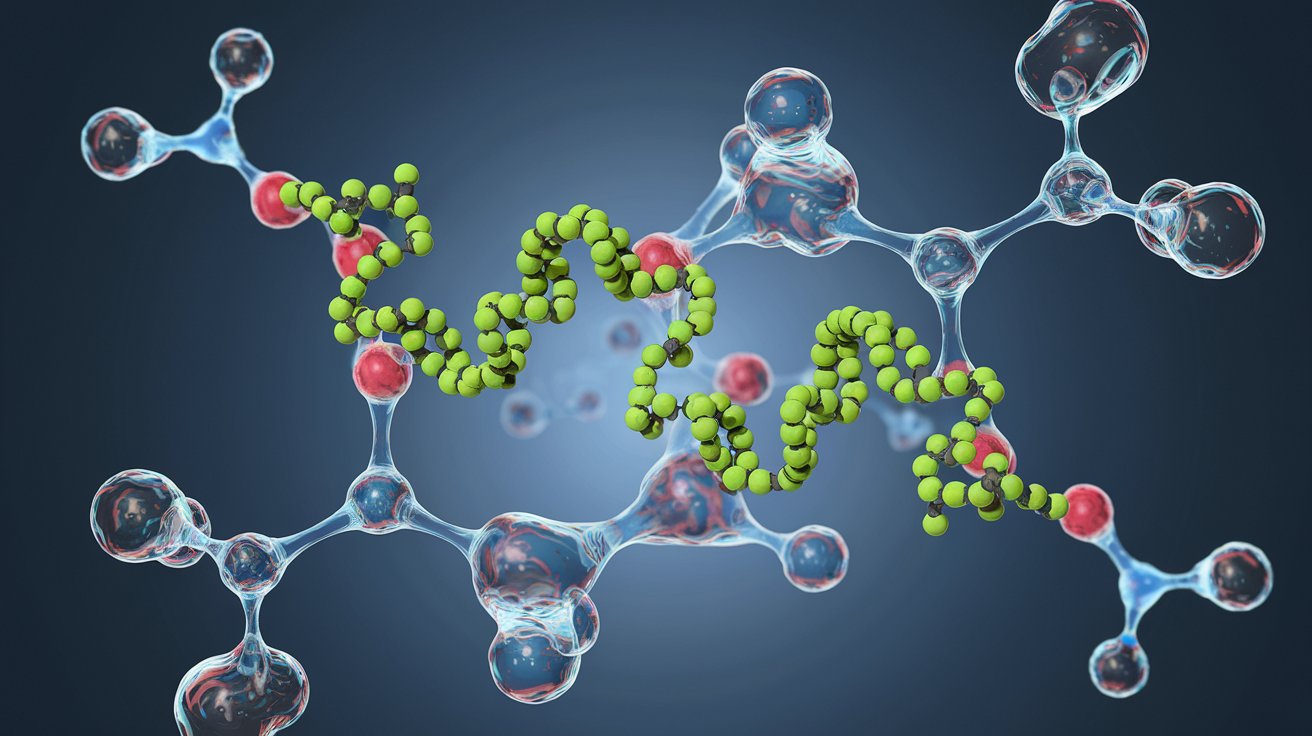
Disinhibited Attachment Disorder is a condition where children struggle to form healthy emotional bonds with caregivers. This disorder often stems from severe neglect or inconsistent caregiving during early childhood. Kids with this disorder may show overly familiar behavior with strangers, lack of selectivity in choosing attachment figures, and difficulty forming deep connections. Understanding Disinhibited Attachment Disorder is crucial for parents, educators, and caregivers to provide the right support. This post will delve into 40 key facts about this disorder, shedding light on its causes, symptoms, and effective strategies for management. Let's get started on this journey to better understand and support those affected by Disinhibited Attachment Disorder.
Key Takeaways:
- Disinhibited Attachment Disorder (DAD) can make kids overly friendly with strangers and struggle with boundaries. Early intervention and stable caregiving are crucial for helping them develop healthy relationships.
- Children with DAD may have difficulty forming genuine attachments and face challenges in school. Establishing routines, positive reinforcement, and clear boundaries can make a big difference in supporting them.
What is Disinhibited Attachment Disorder?
Disinhibited Attachment Disorder (DAD) is a condition where children exhibit overly familiar behavior with strangers and lack appropriate boundaries. This disorder often stems from early neglect or inconsistent caregiving. Understanding DAD can help in recognizing and addressing the needs of affected children.
-
DAD is often linked to early childhood neglect. Children who experience neglect or inconsistent caregiving in their early years are more likely to develop DAD.
-
Overly familiar behavior with strangers is a key symptom. Kids with DAD may approach and interact with strangers as if they were familiar adults, showing no fear or hesitation.
-
Lack of appropriate boundaries is common. These children often struggle to understand personal space and social norms, leading to inappropriate behavior.
-
DAD can coexist with other disorders. It is not uncommon for children with DAD to also have other conditions like ADHD or anxiety disorders.
-
Early intervention is crucial. The sooner a child with DAD receives help, the better their chances of developing healthy attachments and social skills.
Causes and Risk Factors
Understanding the causes and risk factors of DAD can help in prevention and early detection. Various factors contribute to the development of this disorder.
-
Inconsistent caregiving is a major risk factor. Children who do not have a stable caregiver are at higher risk of developing DAD.
-
Institutional care can contribute to DAD. Kids raised in orphanages or similar settings often lack the consistent, nurturing relationships needed for healthy attachment.
-
Frequent changes in caregivers can lead to DAD. Children who experience multiple foster placements or caregiver changes are more susceptible.
-
Parental mental health issues can be a factor. Parents with untreated mental health conditions may struggle to provide the consistent care needed for healthy attachment.
-
Substance abuse in the family increases risk. Children in households with substance abuse issues are more likely to experience neglect and develop DAD.
Symptoms and Behaviors
Recognizing the symptoms and behaviors associated with DAD is essential for early intervention. These signs can vary but often include specific patterns.
-
Indiscriminate friendliness is a hallmark symptom. Children with DAD may show affection to strangers without hesitation.
-
Difficulty forming genuine attachments. These kids often struggle to develop deep, meaningful relationships with caregivers or peers.
-
Attention-seeking behavior is common. They may constantly seek attention from adults, even those they do not know well.
-
Lack of fear in unfamiliar situations. Unlike most children, those with DAD may not show appropriate caution in new or potentially dangerous situations.
-
Poor impulse control. Impulsivity and difficulty following rules are often observed in children with DAD.
Diagnosis and Treatment
Proper diagnosis and treatment are vital for managing DAD. Various methods and approaches can help children with this disorder.
-
Diagnosis involves a thorough assessment. Mental health professionals use interviews, observations, and questionnaires to diagnose DAD.
-
Therapy is a primary treatment method. Different types of therapy, including play therapy and cognitive-behavioral therapy, can be effective.
-
Family involvement is crucial in treatment. Engaging the family in therapy helps create a supportive environment for the child.
-
Medication may be used in some cases. While not a primary treatment, medication can help manage coexisting conditions like anxiety or ADHD.
-
Consistency in caregiving is essential. Stable, nurturing relationships are key to helping children with DAD develop healthy attachments.
Long-term Effects and Outcomes
Understanding the long-term effects and potential outcomes of DAD can help in planning for the future. Early intervention and consistent care can significantly impact these outcomes.
-
Untreated DAD can lead to social issues. Without intervention, children with DAD may struggle with relationships throughout their lives.
-
Academic challenges are common. These children often face difficulties in school due to behavioral issues and attention problems.
-
Increased risk of mental health disorders. Adults who had DAD as children may be more prone to depression, anxiety, and other mental health issues.
-
Potential for substance abuse. There is a higher likelihood of substance abuse in individuals who had DAD, often as a coping mechanism.
-
Improved outcomes with early intervention. Children who receive early and consistent treatment have a better chance of developing healthy relationships and leading successful lives.
Strategies for Caregivers and Educators
Caregivers and educators play a crucial role in supporting children with DAD. Implementing effective strategies can make a significant difference.
-
Establishing routines helps. Consistent daily routines provide a sense of security and predictability for children with DAD.
-
Positive reinforcement is effective. Rewarding good behavior encourages children to repeat those actions.
-
Setting clear boundaries is important. Clear, consistent boundaries help children understand expectations and feel secure.
-
Building trust takes time. Patience and consistency are key in developing trust with a child who has DAD.
-
Providing a safe environment is essential. A stable, nurturing environment helps children feel secure and supported.
Real-life Examples and Case Studies
Real-life examples and case studies can provide valuable insights into DAD. These stories highlight the challenges and successes of managing this disorder.
-
Case study: Sarah's journey. Sarah, a child with DAD, showed significant improvement after consistent therapy and stable caregiving.
-
Example: Mark's progress. Mark, who struggled with DAD, benefited greatly from a structured school environment and supportive teachers.
-
Case study: Emily's success. Emily overcame many challenges associated with DAD through early intervention and a loving adoptive family.
-
Example: Jake's story. Jake's behavior improved dramatically after his foster parents implemented consistent routines and boundaries.
-
Case study: Lily's transformation. Lily, once struggling with DAD, now thrives thanks to a combination of therapy and a stable home environment.
Research and Future Directions
Ongoing research and future directions in understanding and treating DAD are crucial. Advances in this field can lead to better outcomes for affected children.
-
Research on brain development. Studies show that early neglect impacts brain development, contributing to DAD.
-
New therapeutic approaches. Innovative therapies are being developed to address the unique needs of children with DAD.
-
Importance of early detection. Research emphasizes the benefits of identifying and addressing DAD as early as possible.
-
Longitudinal studies. Long-term studies help understand the progression of DAD and the effectiveness of various treatments.
-
Focus on prevention. Efforts are being made to prevent DAD through better support for at-risk families and improved caregiving practices.
Understanding Disinhibited Attachment Disorder
Disinhibited Attachment Disorder (DAD) is a complex condition affecting children who’ve experienced severe neglect or inconsistent caregiving. These kids often struggle with forming healthy emotional bonds, leading to behaviors like indiscriminate friendliness or difficulty trusting others. Recognizing the signs early can make a huge difference in their development and well-being.
Treatment usually involves therapy, creating a stable environment, and consistent caregiving. Support from family and professionals is crucial. With the right help, children with DAD can learn to form healthier relationships and improve their social skills.
If you suspect a child might have DAD, seek professional advice. Early intervention can change their life trajectory. Understanding and addressing this disorder is key to helping affected children lead happier, more connected lives.
Frequently Asked Questions
Was this page helpful?
Our commitment to delivering trustworthy and engaging content is at the heart of what we do. Each fact on our site is contributed by real users like you, bringing a wealth of diverse insights and information. To ensure the highest standards of accuracy and reliability, our dedicated editors meticulously review each submission. This process guarantees that the facts we share are not only fascinating but also credible. Trust in our commitment to quality and authenticity as you explore and learn with us.


